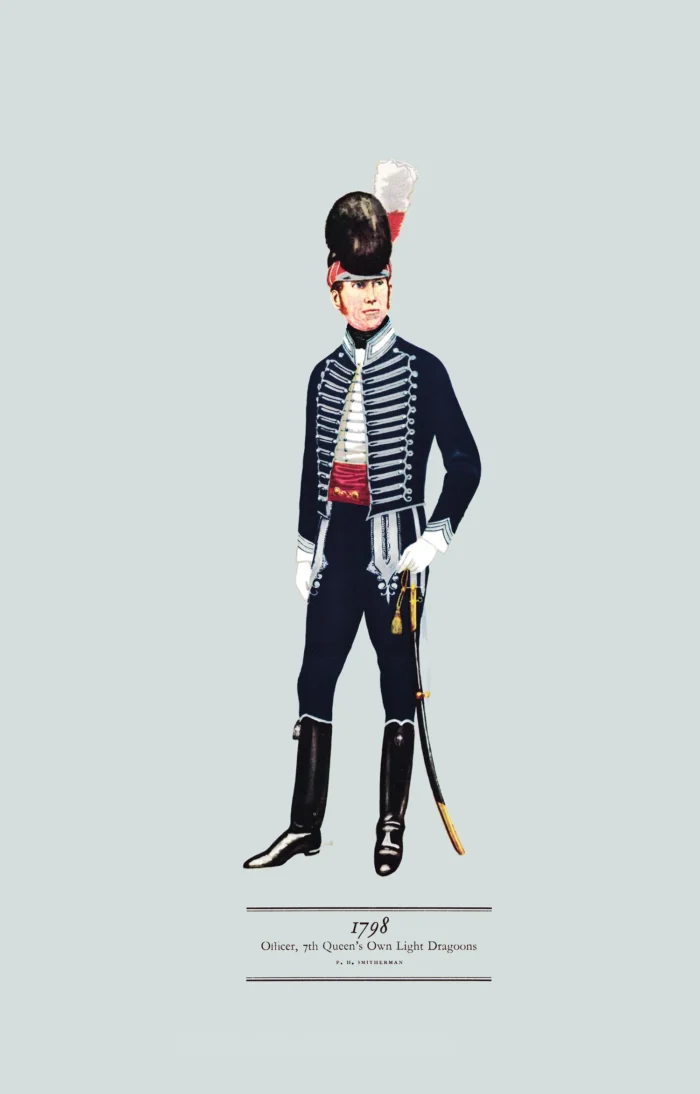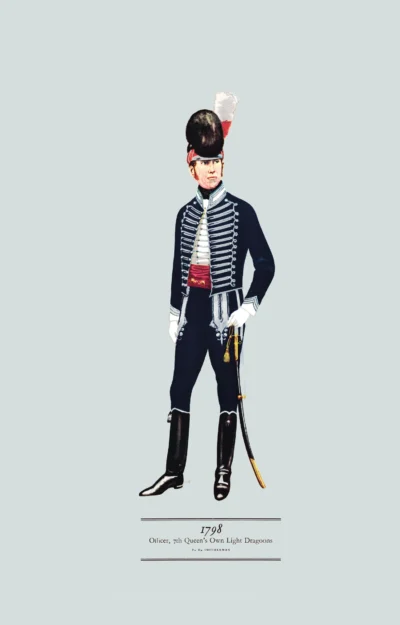Officer, 7th Queen’s Own Light Dragoons, 1798 (Queen’s Own Hussars)
£18.00
Raised 1690; from 1807 7th (The Queen’s Own) (Light) Dragoons (Hussars); from 1993 Queen’s Royal Hussars – QRH (scroll down for a more detailed Description)
Published 1962 by © Hugh Evelyn Limited; drawn by Colonel Philip Henry Smitherman (1910-1982), Royal Corps of Signals
Size: c. 24.5 x 37.5 cm [9 ½ ″ x 14 ½ ″] (may vary slightly from printers’ cut 50 years ago)
Printed on on medium cardstock weighing 144 g/sm2 faced in light greyish blue (RGB c. d5dede)
Print is STANDARD size – shipping is the same for 1 to 10 prints (based on largest print size in your order) – see Shipping & Returns.
In stock
Description
The 7th Light Dragoons was originally raised as a Scottish regiment of Horse and became part of the regular army in 1689 known as Cunningham’s Dragoons after Sir Albert Cunningham. In 1742 it was the 7th Queen’s Own Regiment of Dragoons, and, in 1805, Hussars that amalgamated with the Queen’s Royal Irish Hussars to form the Queen’s Royal Hussars in 1993. Between 1759 and 1768 the coat had been much cut down. The tails have disappeared. The outfit has become very much more magnificent. The officer is in undress uniform, with coat unbuttoned, displaying a decorative waistcoat, and with the blue silver-laced breeches. On parade wore his coat buttoned up, his crimson sash outside the coat, and plain white breeches. This Light Dragoon was the dress from which modern mess dress developed. Although this type of jacket was worn only by Light Dragoons in full dress, it became popular with other cavalry regiments for wear off duty and developed into the stable jacket and eventually into the mess dress adopted by all branches of the Army. The stand-up collar was replaced by a roll collar in most regiments in the last years of the nineteenth century, although some reverted to the older fashion later. In the Indian Army a mess dress similar this was retained until 1939. This dress was adopted while we were engaged in a life-and-death struggle with Napoleon. In its general shape it became more practical than its predecessor but increased in magnificence. During other wars military finery had reduced but seems to have increased during the Napoleonic wars.
Additional information
| Weight | 0.0123 kg |
|---|---|
| Dimensions | 23 × 37 cm |





